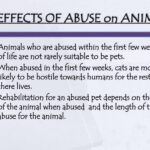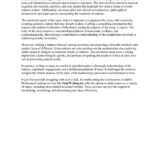Animal cruelty is a grievous offense that has far-reaching implications for both animal welfare and societal standards of compassion. In Vermont, as in many states, the legal framework surrounding animal cruelty is designed to protect vulnerable creatures from abuse and neglect. But the complexities of these laws often raise questions about their efficacy and scope. Specifically, is animal cruelty classified as a felony in Vermont? To address this inquiry thoroughly, it’s imperative to delve into the definitions, legislative history, and broader implications of the Animal Welfare Act.
In Vermont, the statutes concerning animal cruelty are embedded in Title 13 of the Vermont Statutes Annotated, specifically under Chapter 14. This chapter delineates various forms of animal cruelty, ranging from neglect to intentional infliction of harm. However, the classification of these offenses can vary significantly. While many states categorize severe cases of animal cruelty as felonies, Vermont adopts a more nuanced approach. Animal cruelty here can indeed be a felony, particularly in egregious cases wherein the perpetrator knowingly inflicts serious bodily harm or death to an animal.
To comprehend the specifics, one must consider the definitions laid out in the Vermont General Assembly’s legal texts. According to the statute, an individual may be charged with cruelty if they intentionally or recklessly mistreat an animal, which encompasses actions such as beating, torturing, or otherwise causing undue suffering. Notably, the legislature has made strides to ensure that not only overt acts of cruelty are punished but also neglectful behavior that leads to an animal’s suffering.
In Vermont, the differentiation between misdemeanor and felony charges is pivotal. Misdemeanor charges typically pertain to less severe forms of neglect or cruelty, which might involve minor physical harm or poor living conditions. However, when the cruelty manifests in a manner that includes serious physical harm, or when the act involves multiple animals, the offense is escalated to a felony. A conviction may lead to significant penalties, including substantial fines and imprisonment, reflecting society’s growing intolerance for such abuses.
But why does this matter? The ramifications of these legal classifications extend beyond mere punishment. They embody a societal commitment to animal welfare, reflecting evolving perspectives on the moral status of animals. As public awareness regarding animal rights burgeons, legislators are increasingly held accountable to enact and enforce meaningful protections. This movement is mirrored in the legislative landscape, where advancements in animal protection laws often coincide with broader societal values regarding empathy and ethical treatment.
Another critical dimension to the discussion of animal cruelty legislation in Vermont is the intersection with the Animal Welfare Act (AWA). Though the AWA was primarily established to govern the care and treatment of animals in research, exhibition, and transport, it sets a foundational precedent for the humane treatment of animals across the board. It provides a basis against which states like Vermont can build their own regulations and standards. However, the AWA’s emphasis on specific categories of animals means its application may not fully encapsulate the myriad of animals susceptible to cruelty in domestic contexts.
Understanding the AWA’s limitations can illuminate deeper systemic issues. For instance, the Act does not cover animals used in farming, a stark contrast to the protections afforded to pets and service animals. Consequently, a significant gap exists in animal welfare legislation, giving rise to questions about how comprehensively the law safeguards all animals from cruelty. This dichotomy often leads to heated debates among animal rights advocates, agricultural interests, and policymakers, underscoring the complexities of formulating laws that equitably protect all animals.
The discussion surrounding animal cruelty is not merely academic. Each case of cruelty can serve as a rallying point for advocacy and reform. Communities and organizations dedicated to animal welfare play a crucial role in both supporting legislative initiatives and raising public consciousness around incidents of cruelty. The efforts to foster compassion towards animals feed into greater movements for social justice, where the treatment of the most vulnerable—be they human or animal—reflects the ethical fiber of a society.
Moreover, psychological insights into the mindsets of individuals who commit acts of animal cruelty indicate a myriad of underlying societal issues. Studies have suggested a correlation between animal abuse and subsequent violent behavior towards humans. Therefore, addressing animal cruelty not only serves the interests of animal protection but is integral in preempting wider societal violence and dysfunction. This understanding advocates for a holistic approach to law enforcement, which encompasses education and rehabilitation as vital components of preventing such behavior rather than solely punitive measures.
Vermont, with its progressive approach towards animal welfare legislation, exemplifies the ongoing evolution in the recognition of animals as sentient beings deserving of protection. While animal cruelty is indeed classified as a felony under certain circumstances, the implications and ramifications extend much further into the fabric of society. As advocacy continues to illuminate the complexities surrounding animal rights, it beckons a collective responsibility to uphold humane standards, fostering an environment where the welfare of all sentient beings is prioritized. In a rapidly evolving world, the commitment to address and rectify the injustices faced by animals remains a crucial endeavor, one that is foundational to our shared humanity.








